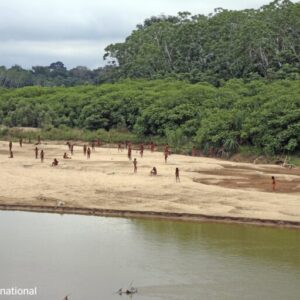Physical Address
304 North Cardinal St.
Dorchester Center, MA 02124
Physical Address
304 North Cardinal St.
Dorchester Center, MA 02124

A haunting testimony from a Matis Indigenous woman in Brazil reveals the devastating impact of outside contact on isolated communities. “My children died. My mother died. My husband died,” she told an anthropologist in the 1990s, describing how diseases brought by loggers and miners in the 1970s nearly wiped out her entire people. Her family’s tragedy illustrates a global crisis that continues today.
Survival International has released a comprehensive 300-page report documenting the urgent threats facing the world’s 196 remaining uncontacted Indigenous peoples. “Uncontacted Indigenous Peoples: at the Edge of Survival” draws on decades of testimonies from communities whose lives have been devastated by forced contact with the outside world. The Matis, like countless other Indigenous groups, had no immunity to diseases like influenza that outsiders inadvertently introduced.
Today’s threats are even more systematic and dangerous. The report warns that “the rush by extractive industries and agribusiness to seize the resources of uncontacted peoples risks their total annihilation.” Mining companies, logging operations, and agricultural expansion continue pushing deeper into the remote territories where these communities have lived for generations, bringing the same deadly combination of disease and displacement that decimated the Matis.
The human rights organization argues that these 196 groups—scattered across remote forests, mountains, and islands worldwide—must be left alone and their territories fully protected. Their survival depends on maintaining the isolation that has preserved their cultures and lives for centuries, making this one of the most critical human rights and environmental protection issues of our time.
[envirolink_metadata style=”card”]